Kecheng Zhang
Joint Design of Radar Receive Filter and Unimodular ISAC Waveform with Sidelobe Level Control
Mar 19, 2025Abstract:Integrated sensing and communication (ISAC) has been considered a key feature of next-generation wireless networks. This paper investigates the joint design of the radar receive filter and dual-functional transmit waveform for the multiple-input multiple-output (MIMO) ISAC system. While optimizing the mean square error (MSE) of the radar receive spatial response and maximizing the achievable rate at the communication receiver, besides the constraints of full-power radar receiving filter and unimodular transmit sequence, we control the maximum range sidelobe level, which is often overlooked in existing ISAC waveform design literature, for better radar imaging performance. To solve the formulated optimization problem with convex and nonconvex constraints, we propose an inexact augmented Lagrangian method (ALM) algorithm. For each subproblem in the proposed inexact ALM algorithm, we custom-design a block successive upper-bound minimization (BSUM) scheme with closed-form solutions for all blocks of variable to enhance the computational efficiency. Convergence analysis shows that the proposed algorithm is guaranteed to provide a stationary and feasible solution. Extensive simulations are performed to investigate the impact of different system parameters on communication and radar imaging performance. Comparison with the existing works shows the superiority of the proposed algorithm.
Low-Complexity Minimum BER Precoder Design for ISAC Systems: A Delay-Doppler Perspective
Oct 21, 2024



Abstract:Orthogonal time frequency space (OTFS) modulation is anticipated to be a promising candidate for supporting integrated sensing and communications (ISAC) systems, which is considered as a pivotal technique for realizing next generation wireless networks. In this paper, we develop a minimum bit error rate (BER) precoder design for an OTFS-based ISAC system. In particular, the BER minimization problem takes into account the maximum available transmission power budget and the required sensing performance. Different from prior studies that considered ISAC in the time-frequency (TF) domain, we devise the precoder from the perspective of the delay-Doppler (DD) domain by exploiting the equivalent DD domain channel due to the fact that the DD domain channel generally tends to be sparse and quasi-static, which can facilitate a low-overhead ISAC system design. To address the non-convex optimization design problem, we resort to optimizing the lower bound of the derived average BER by adopting Jensen's inequality. Subsequently, the formulated problem is decoupled into two independent sub-problems via singular value decomposition (SVD) methodology. We then theoretically analyze the feasibility conditions of the proposed problem and present a low-complexity iterative solution via leveraging the Lagrangian duality approach. Simulation results verify the effectiveness of our proposed precoder compared to the benchmark schemes and reveal the interplay between sensing and communication for dual-functional precoder design, indicating a trade-off where transmission efficiency is sacrificed for increasing transmission reliability and sensing accuracy.
Dual-Functional Waveform Design with Local Sidelobe Suppression via OTFS Signaling
Apr 30, 2024Abstract:Integrated sensing and communication (ISAC) is viewed as a key technology in future wireless networks. One of the main challenges in realizing ISAC is developing dual-functional waveforms that can communicate with communication receivers and perform radar sensing simultaneously. In this paper, we consider the joint design of a dual-functional orthogonal time-frequency space (OTFS) signal and a receiving filter for the ISAC system. The problem of ISAC waveform design is formulated as the minimization of the weighted integrated sidelobe level (WISL) of the ambiguity function and the interference term from ISAC waveform, with constraints on signal-to-noise ratio loss. The majorization-minimization algorithm combined with alternating iterative minimization is implemented to solve the optimization problem. Simulation results show that the WISL and the interference term can be significantly decreased to guarantee achievable data rates and detection performance.
Radar Sensing via OTFS Signaling
Jun 20, 2023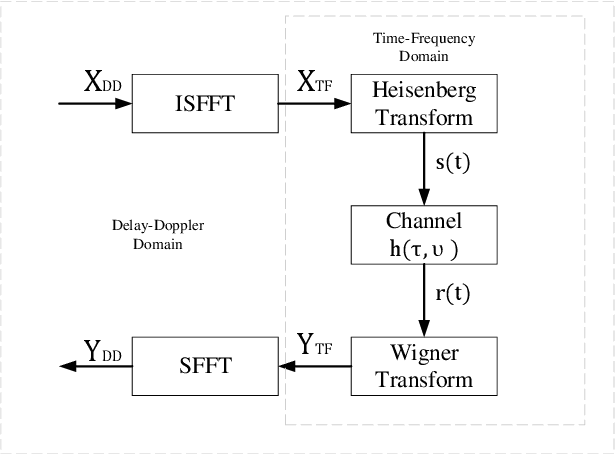
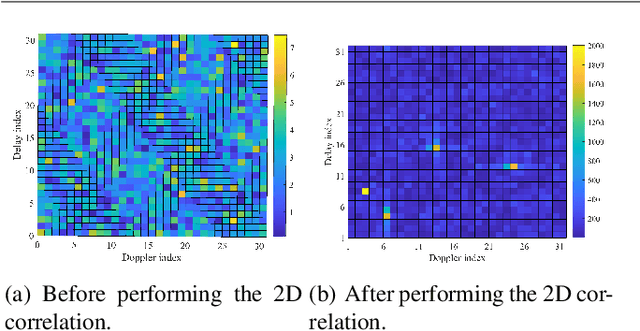
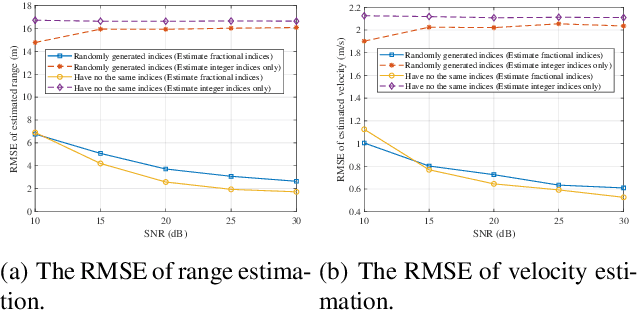
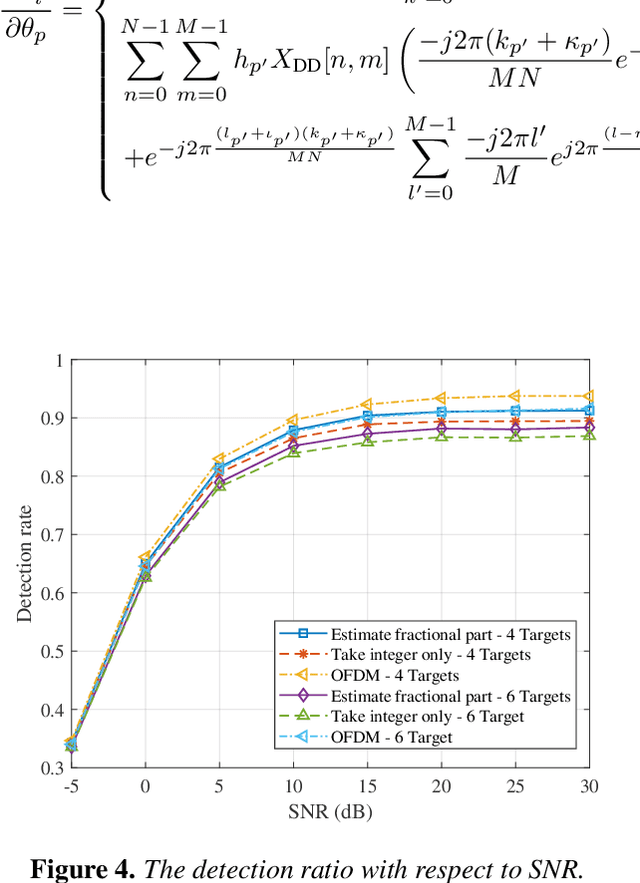
Abstract:By multiplexing information symbols in the delay-Doppler (DD) domain, orthogonal time frequency space (OTFS) is a promising candidate for future wireless communication in high-mobility scenarios. In addition to the superior communication performance, OTFS is also a natural choice for radar sensing since the primary parameters (range and velocity of targets) in radar signal processing can be inferred directly from the delay and Doppler shifts. Though there are several works on OTFS radar sensing, most of them consider the integer parameter estimation only, while the delay and Doppler shifts are usually fractional in the real world. In this paper, we propose a two-step method to estimate the fractional delay and Doppler shifts. We first perform the two-dimensional (2D) correlation between the received and transmitted DD domain symbols to obtain the integer parts of the parameters. Then a difference-based method is implemented to estimate the fractional parts of delay and Doppler indices. Meanwhile, we implement a target detection method based on a generalized likelihood ratio test since the number of potential targets in the sensing scenario is usually unknown. The simulation results show that the proposed method can obtain the delay and Doppler shifts accurately and get the number of sensing targets with a high detection probability.
Integrated Sensing and Communications: Recent Advances and Ten Open Challenges
Apr 29, 2023
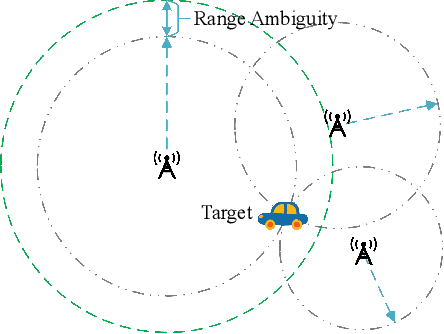
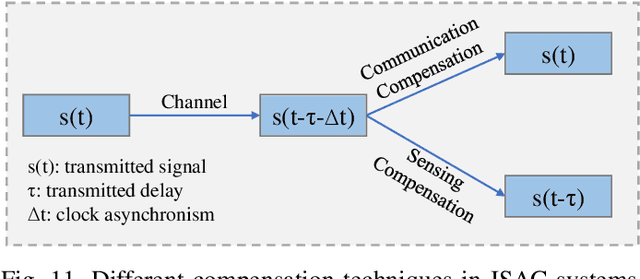
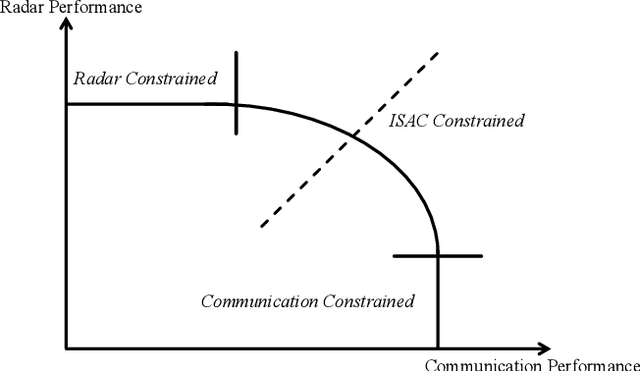
Abstract:It is anticipated that integrated sensing and communications (ISAC) would be one of the key enablers of next-generation wireless networks (such as beyond 5G (B5G) and 6G) for supporting a variety of emerging applications. In this paper, we provide a comprehensive review of the recent advances in ISAC systems, with a particular focus on their foundations, system design, networking aspects and ISAC applications. Furthermore, we discuss the corresponding open questions of the above that emerged in each issue. Hence, we commence with the information theory of sensing and communications (S$\&$C), followed by the information-theoretic limits of ISAC systems by shedding light on the fundamental performance metrics. Next, we discuss their clock synchronization and phase offset problems, the associated Pareto-optimal signaling strategies, as well as the associated super-resolution ISAC system design. Moreover, we envision that ISAC ushers in a paradigm shift for the future cellular networks relying on network sensing, transforming the classic cellular architecture, cross-layer resource management methods, and transmission protocols. In ISAC applications, we further highlight the security and privacy issues of wireless sensing. Finally, we close by studying the recent advances in a representative ISAC use case, namely the multi-object multi-task (MOMT) recognition problem using wireless signals.
Radar Sensing via OTFS Signaling: A Delay Doppler Signal Processing Perspective
Jan 24, 2023



Abstract:The recently proposed orthogonal time frequency space (OTFS) modulation multiplexes data symbols in the delay-Doppler (DD) domain. Since the range and velocity, which can be derived from the delay and Doppler shifts, are the parameters of interest for radar sensing, it is natural to consider implementing DD signal processing for radar sensing. In this paper, we investigate the potential connections between the OTFS and DD domain radar signal processing. Our analysis shows that the range-Doppler matrix computing process in radar sensing is exactly the demodulation of OTFS with a rectangular pulse shaping filter. Furthermore, we propose a two-dimensional (2D) correlation-based algorithm to estimate the fractional delay and Doppler parameters for radar sensing. Simulation results show that the proposed algorithm can efficiently obtain the delay and Doppler shifts associated with multiple targets.
 Add to Chrome
Add to Chrome Add to Firefox
Add to Firefox Add to Edge
Add to Edge